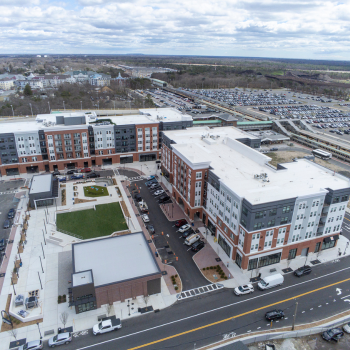Donald Felice remembers when everyone in Patchogue shopped at local stores and stopped at Doukas’s ice cream parlor, which later became Johnny’s Luncheonette.
“You’d never shop anywhere else. You’d come to Patchogue,” said Felice, 79, a lifelong resident.
But in the ’60s, as malls and shopping centers opened nearby, the life drained out of downtown, which became derelict and disused for decades.
Then, in the mid-2000s, developers and restaurateurs bet on Patchogue, hoping their investments would benefit the greater community.
Patchogue is one of several Long Island villages that have undergone a renaissance, after enduring stifling stretches of uninviting vacant storefronts and rundown buildings along their main drags. Elected officials from three communities looked back at how their downtowns turned around, some of the challenges they faced and what they would do differently.
PATCHOGUE
THE DOWNTURN
Mayor Paul Pontieri recalled a once-thriving downtown that suffered after South Shore and Smith Haven malls opened in 1963 and 1969, respectively.
“Malls became the place to go, not downtowns anymore,” said Pontieri.
“What happened was the stores on Main Street, they all went out of business,” said Felice’s daughter, Heather Felice, 53, a real estate agent who also lives in Patchogue. “So, the town in the late-’80s became a ghost town.”
That extended to 2004, when Pontieri was elected.
“When I took over as mayor, there was nothing going on on Main Street,” he said.
TURNING POINT
In 2005, Tritec Real Estate was invited to build along the intersection of Ocean Avenue and Main Street, which would become New Village at Patchogue. About 50% of Main Street was vacant then, but Pontieri philosophized that businesses would come after development, not before.
“You really had to make downtown vibrant,” Pontieri said.
Donald Felice was working as a mechanic on South Ocean Ave and Academy Street, when the next door neighbor, who’d planned to build 30 condos on the site, went out of business after building four units. Felice bought the property and in 2006, completed Seacrest Village, comprising 44 one-bedroom rental units.
“It was right next door to my gas station; I could keep an eye on it,” Felice said. “And I wanted to bring Patchogue to the way it was when I was a kid.”
CHALLENGES
Neighbors opposed, worrying about adding more renters to a town where absentee landlords subdivided houses that were often neglected, said Heather Felice.
“My father really had to struggle with the village to get it permitted,” she said, adding that her father lives on site and serves as property manager.
New Village also faced resistance, noted Bob Coughlan, principal of Tritec.
“Many residents and business owners feared change and that it would make things worse,” Coughlan said. He noted the village and Tritec were sued twice in 2011 and the development occurred during the 2008 financial crisis, making it difficult to get financing.
Despite that, Tritec built relationships with officials and locals through significant community outreach, which included preserving the Carnegie Library.
“This allowed us to invest more than $112 million in the village and the project,” Coughlan said.
GAINING MOMENTUM
With the success of Seacrest Village, Pontieri looked for more housing opportunities to recreate the thriving downtown of his childhood. The village pursued developments like the 80-townhouse condominium Copper Beech Village, completed in 2008 at the site of the former Johnny’s Luncheonette.
“You had to have feet on the street for any kind of business to prosper. And you always get that with housing,” Pontieri said.
In 2006, Chef Eric Rifkin opened Bobbique on West Main Street, heralding a restaurant revival, said Pontieri. It was soon followed by Artspace — 45 affordable lofts for artists with monthly rents ranging from $951 for a studio to $1,667 for a three-bedroom.
Tritec completed New Village at Patchogue in 2014, consisting of 291 rental units and 45,000 square feet of retail space.
The village-owned Patchogue Theatre for the Performing Arts, previously renovated in 1998, was refurbished in 2016 and 2017. The revamp, funded with $1.5 million through a private foundation, helped turn the area into a cultural destination.
TODAY
Patchogue presently boasts about 35 restaurants.
“Spaces stay vacant for a very short period of time,” said Pontieri, adding Patchogue’s sewer plant helped make development possible.
Condos and single-family homes sell quickly, attracting multi-generational buyers, said Heather Felice.
Homes priced between $400,000 and $700,000 often sell within a week, she said.
LESSONS AND TAKEAWAYS
With its newfound population, parking can be an issue, which the village has addressed by installing meters to help finance the expansion of a key parking lot.
“I believe our focus on housing, sewers, parks and the village’s diversity created the foundation for the revitalization of our downtown,” Pontieri said. “No plan is perfect, but there aren’t any major decisions I would change.”
Read the full article in Newsday.

